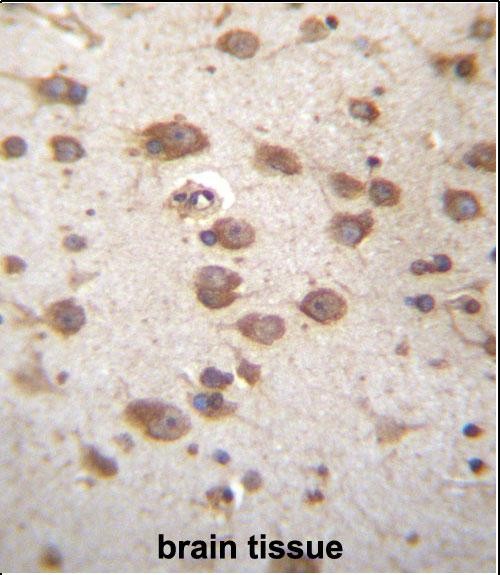

| WB | 1/1000 | Human,Mouse,Rat |
| IF | 咨询技术 | Human,Mouse,Rat |
| IHC | 1/100-1/500 | Human,Mouse,Rat |
| ICC | 技术咨询 | Human,Mouse,Rat |
| FCM | 咨询技术 | Human,Mouse,Rat |
| Elisa | 咨询技术 | Human,Mouse,Rat |
| Aliases | Signal-transducing adaptor protein 2, STAP-2, Breast tumor kinase substrate, BRK substrate, STAP2, BKS |
| Entrez GeneID | 55620 |
| WB Predicted band size | 44.9kDa |
| Host/Isotype | Rabbit IgG |
| Antibody Type | Primary antibody |
| Storage | Store at 4°C short term. Aliquot and store at -20°C long term. Avoid freeze/thaw cycles. |
| Species Reactivity | Human |
| Immunogen | This STAP2 antibody is generated from rabbits immunized with a KLH conjugated synthetic peptide between 187-216 amino acids from the Central region of human STAP2. |
| Formulation | Purified antibody in PBS with 0.05% sodium azide. |
+ +
The STAP2 (Signal-transducing adaptor protein 2) antibody is a tool used to study the STAP2 protein, a member of the signal-transducing adaptor family involved in regulating intracellular signaling pathways. STAP2. structurally characterized by a pleckstrin homology (PH) domain and a Src homology 2 (SH2) domain, interacts with kinases and receptors to modulate immune responses, cytokine signaling (e.g., IL-4. IL-6), and metabolic processes. It shares homology with STAP1 but exhibits distinct roles, such as enhancing JAK-STAT, MAPK, and PI3K-AKT pathways.
Research highlights STAP2's involvement in immune cell regulation, including T-cell activation, B-cell differentiation, and macrophage function. Dysregulation of STAP2 has been linked to inflammatory diseases, cancer progression (e.g., leukemia, breast cancer), and metabolic disorders. Antibodies targeting STAP2 enable detection of its expression, post-translational modifications, and interactions in tissues or cell lines via techniques like Western blotting, immunohistochemistry, and immunoprecipitation. These studies aim to clarify STAP2's mechanistic roles in pathologies and its potential as a biomarker or therapeutic target. Commercial STAP2 antibodies are typically validated for specificity and sensitivity, though optimization for experimental conditions is often required. Ongoing research continues to explore its multifaceted contributions to cellular signaling networks.
×